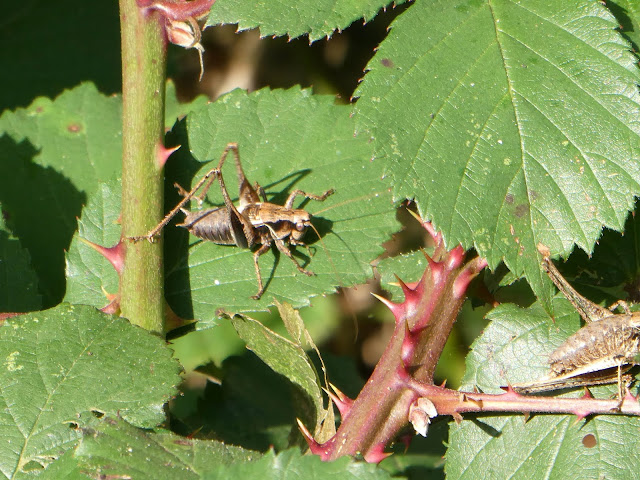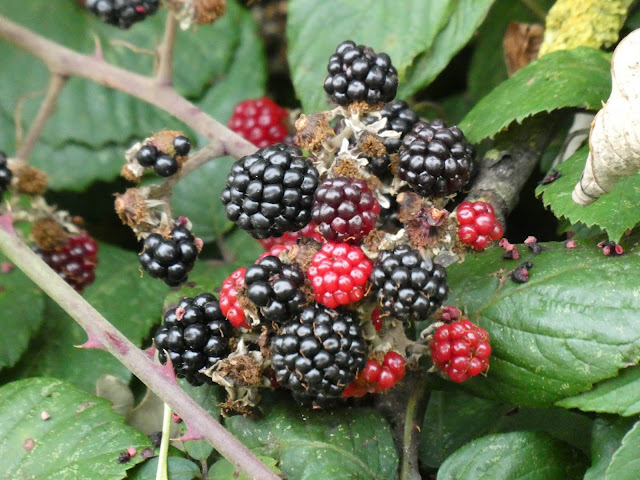 |
Photo: 17 July 2021
|
I have been meaning to identify and post the photograph of this rather large and ferocious-looking creature for some months. We noticed it predating smaller insects in our 'no-mow' long grass.
I have at last discovered (assuming I am right) that it is probably the Kite-tailed Robberfly, although there are 29 species of Robberfly in the UK. Unfortunately the end of the abdomen is hidden in the green stalks and therefore of little help in identification.
Robberflies catch insects and spiders. They inject their prey to cause paralysis. The bristles on their face comprise their mystax (think: moustache), a new word for me.
This is an another first sighting (and the 120th insect) to add to my home patch list.
Note:
I am not sure whether 'Robberfly', 'Robber Fly' or 'Robber-fly' is the preferred spelling. The Wildlife Trusts seem to favour the first. The Encyclopdia Britannica site uses the second, and my Complete Guide to British Insects (Collins) adopts the third.







































